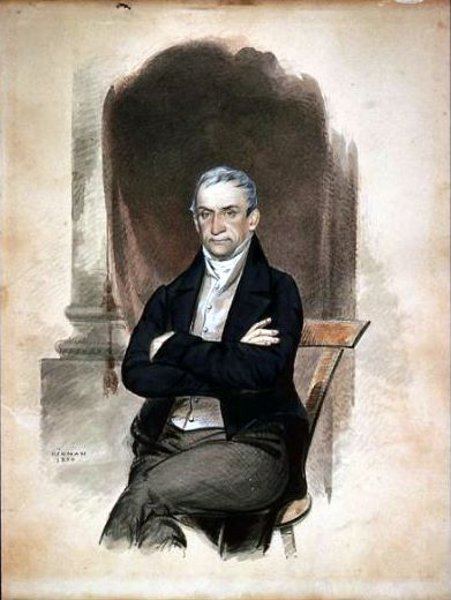Name Benjamin Bussey | ||
 | ||
Died | ||
Benjamin Bussey (1757—1842) was a prosperous merchant, farmer, horticulturalist and patriot in Boston, Massachusetts, United States, who made significant contributions to the creation of the Arnold Arboretum. He was said to be "a man of excellent business capacity."
Contents

Career
Bussey opened a gold and silversmith shop in Dedham, Massachusetts in 1778 where he made spurs, spoons, and other objects from metal. As his business on East Street prospered, he soon added general merchandise. Bussey took the $25,000 he made to Boston in 1790 where he ran a shipping and trading company for 16 years at five different locations.
At the age of 49 he retired to a life raising Merino sheep on a 300 acre farm in Roxbury. He left retirement at the age of 62 to return to Dedham where he purchased the Norfolk Cotton Manufacturing Company on Maverick Street along Mother Brook. The War of 1812 had brought ruin to the company, and he purchased it in 1819 for a sum far below cost. Bussey used the wool from his sheep, producing a high caliber product that sold well.
Bussey then bought a failed woollen mill from the Dedham Worsted Company only three years after they opened on the street that now bears his name. Bussey brought in the best equipment, and refurbished many of the old buildings. It was said that the factories, dye houses, dwellings, and other buildings associated with the operation "of themselves constitute a little village."
Bequests
Bussey owned land in what is now the Forest Hills area of Jamaica Plain. In 1800, he inherited additional land from fellow patriot Eleazer Weld and further enlarged his estate between 1806 and 1837 by acquiring and consolidating various farms that had been established as early as the seventeenth century. His estate was known as "Woodland Hill".
He bequeathed his land and part of his fortune to Harvard University "for instruction in agriculture, horticulture, and related subjects". Harvard used this land for the creation of the Bussey Institute, which was dedicated to agricultural experimentation. The first Bussey Institute building was completed in 1871 and served as headquarters for an undergraduate school of agriculture.
One half of the income from Bussey's estates and property endowed professorships and scholarships in the Harvard Divinity School and the Harvard Law School, while the other half supported the Institute.
Sixteen years after Bussey's death, James Arnold, a New Bedford, Massachusetts whaling merchant, specified that a portion of his estate was to be used for "...the promotion of Agricultural, or Horticultural improvements". In 1872, when the trustees of the will of James Arnold transferred his estate to Harvard University, Arnold’s gift was combined with 120 acres (0.5 km²) of the former Bussey estate to create the Arnold Arboretum.
The arboretum's Bussey Hill and Bussey Brook (formerly Sawmill Brook), and the adjacent Bussey Street still bear his name. Bussey Street in Dedham, Massachusetts, where he owned mills, is also named for him. A plaster bust of him is housed at the Dedham Historical Society and Museum.
